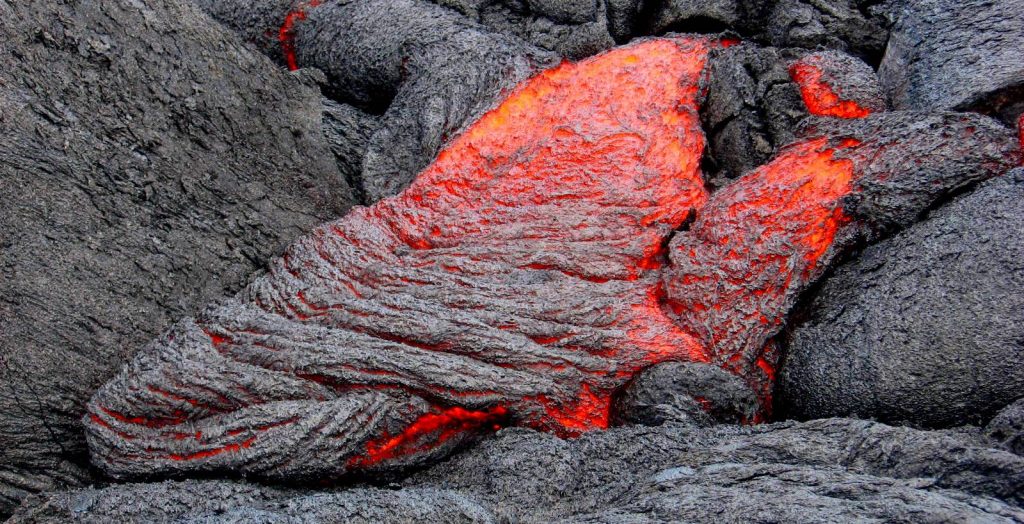Chapter 6 Igneous Rocks
The rock components of the crust are slowly but constantly being changed from one form to another and the processes involved are summarized in the rock cycle.
In describing the three different rock types, we can start anywhere we like, although it’s convenient to start with igneous rocks and how they form. Igneous rocks form from the cooling and solidification of molten material (Figure 6.1.3). Magmas and lavas are both molten material or melts, but have a subtle difference. Magma is melt that is contained within the Earth. Once a melt erupts onto the surface, we call it lava. As we’ll see in more detail below, magma is rock that is hot to the point of being entirely molten, with a temperature of between about 800° and 1300°C, depending on the composition and the pressure.

We can further categorize an igneous rock depending on whether it cools inside the Earth or erupts to the surface, as the two types will generally have a textural difference. Magma that cools and solidifies slowly within the crust (over centuries to millions of years)—forms intrusive igneous rock. Lava erupted onto the Earths surface will cool more quickly (within seconds to years)—forming extrusive igneous rock (volcanic rock) (Figure 3.1.2). Intrusive igneous rock typically crystallizes at depths of hundreds of metres to tens of kilometres below the surface.
Images Attributions
- Figure 3.1.1, 3.1.2, 3.1.3, 3.1.4: © Steven Earle. CC BY.
the series of processes through which rocks are transformed from one type to another
an igneous rock that has cooled slowly beneath the surface
igneous rock that cooled at surface
